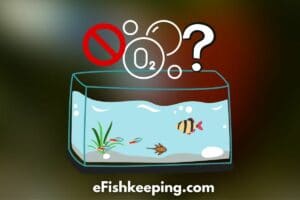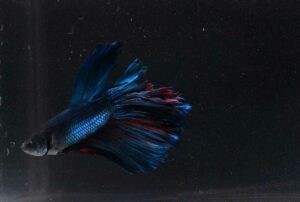Explore what fish eggs look like, the five best examples with pictures, and essential information about each one of them, in this informative guide.
What Do Fish Eggs Look Like?
Fish eggs are generally small, round, or oval-shaped and look like seeds from a distance. The eggs typically have white, translucent, or other shades of color based on the fish species that laid them.
Fish eggs can look slightly different based on the colors and shape.
Here’s a chart that explains the egg color and shape of some aquarium fish you could have heard of in the hobby.
| Fish: | Egg: |
| Betta | Look Like White Pearls, Small, Oval |
| Angelfish | Amber or Brownish, Very Tiny |
| Discus Fish | Goldish or Orangish (After Fertilization) |
| Convict Cichlids | Whitish-Brown, Size Of A Small Bead |
| Clownfish | Look Like Small Orange Dots |
Let’s take a closer look at the eggs of each of these fish species.
#1. Betta Fish Eggs:
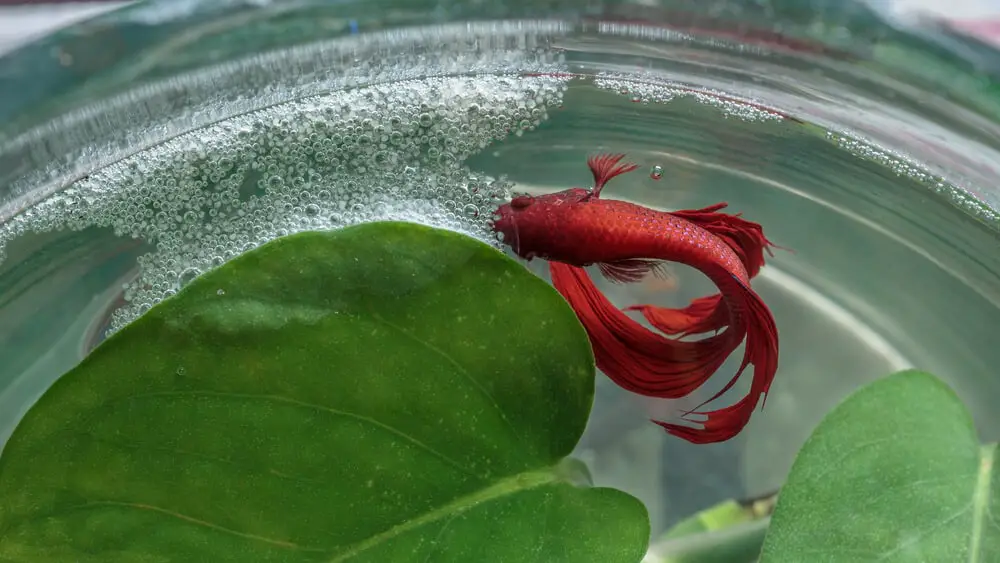
1. What Do Betta Fish Eggs Look Like?
The betta fish eggs look like white pearls and are 1 millimeter wide.
Once the fertilized eggs grow bigger, they tend to have a yellowish shade. Moreover, you can also notice two dots appearing on the eggs, which are nothing but the cute little eyes of the betta fry.
On the other hand, the unfertilized eggs tend to remain as same white colored and don’t alter much.
The eggs are typically not fully round but have an oval, unequal form.
2. How Long Do Betta Fish Eggs Take To Hatch?
In the case of betta fish, the male bettas create the bubble nest. He then places the eggs into the bubble nest. Then, in about 3 days, the baby betta fish hatch.
3. How Many Eggs Do Betta Fish Lay?
On average, betta fish can have between 30-100 eggs in each bath. However, some betta fish can also lay up to 500 eggs at once if you get lucky.
4. Where Do Betta Fish Lay Eggs?
Once the male betta fish is ready to breed, he creates a bubble nest that floats at the top f the tank (looking like a small cluster of bubbles).
After the mating is completed, the female bettas release the eggs in the tank. Then, the male betta fish collects and carries them to the bubble nest.
The male betta fish stays below the bubble nest and keeps a close eye to protect the eggs from potential predators. And if any eggs fall, he puts them back in.
#2. Angelfish Eggs:
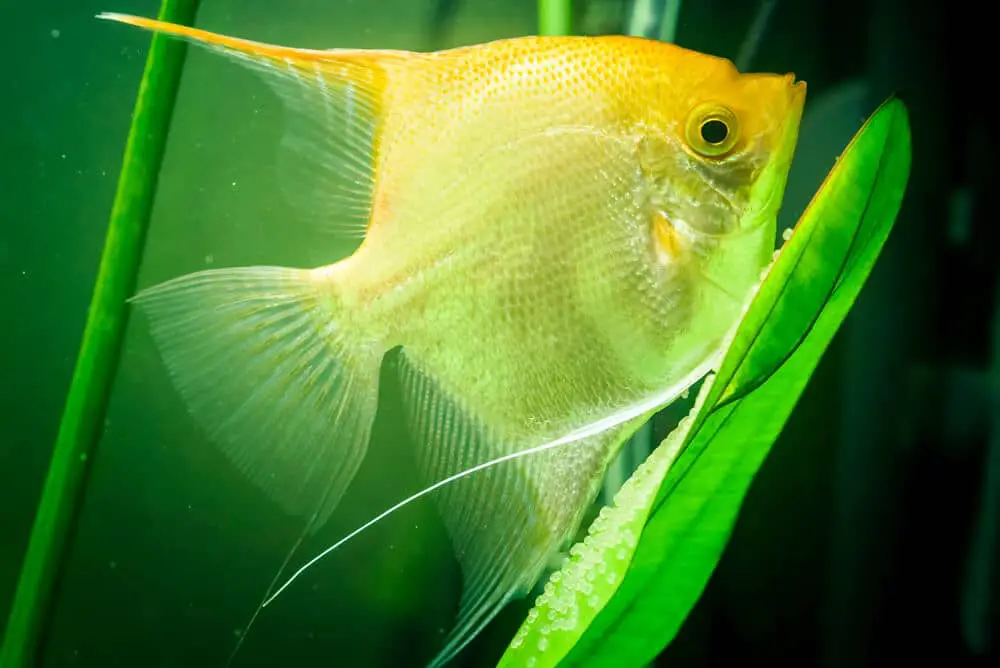
1. What Do Angelfish Eggs Look Like?
In general, the eggs of an angelfish are even smaller than the head of a straight pin.
The fertilized eggs of Angelfish have a translucent amber or a brownish color. However, if the eggs turn white, it’s an indication of not being fertilized eggs. And those eggs are likely to end up as rotten eggs.
2. How Long Do Angelfish Eggs Take To Hatch?
The Angelfish eggs typically take around 60 hours to hatch at about 80 degrees Fahrenheit temperature.
Interestingly, once the eggs are around 60 hours, the larvae inside the eggs become developed and curl around the yolk sac.
During this time, the egg wall remains so transparent that you can see the heartbeat and blood flow of the larvae under the microscope!
Right after hatching, the next stage is the wiggler stage, and the fry remains in this stage for 5 more days after hatching.
3. How Many Eggs Do Angelfish Lay?
Angelfish can lay between 100-1000 eggs in a single laying. And the angelfish pair in your tank can spawn every 2 weeks, specifically if you have removed them from their laid eggs in the past.
4. Where Do Angelfish Fish Lay Eggs?
Once the spawning site is clean and ready, the female angelfish starts laying her sticky eggs row by row. And the male angelfish then brush over the eggs for fertilization.
Generally, angelfish lay their eggs on flat horizontal surfaces like a broad leaf. They clean the leaf before laying or fertilizing the eggs.
Angelfish typically lay their eggs on broad-leaf plants like Amazon swords in the wild. So if you are about to set up a breeding tank for angelfish, you can have a similar plant setup in the tank.

Or, you can also have this type of stand-up breeding slate for angelfish (available on Amazon). It simulates the Amazon sword leaf and thus provides a proper spawning surface for laying their eggs.
#3. Discus Fish Eggs
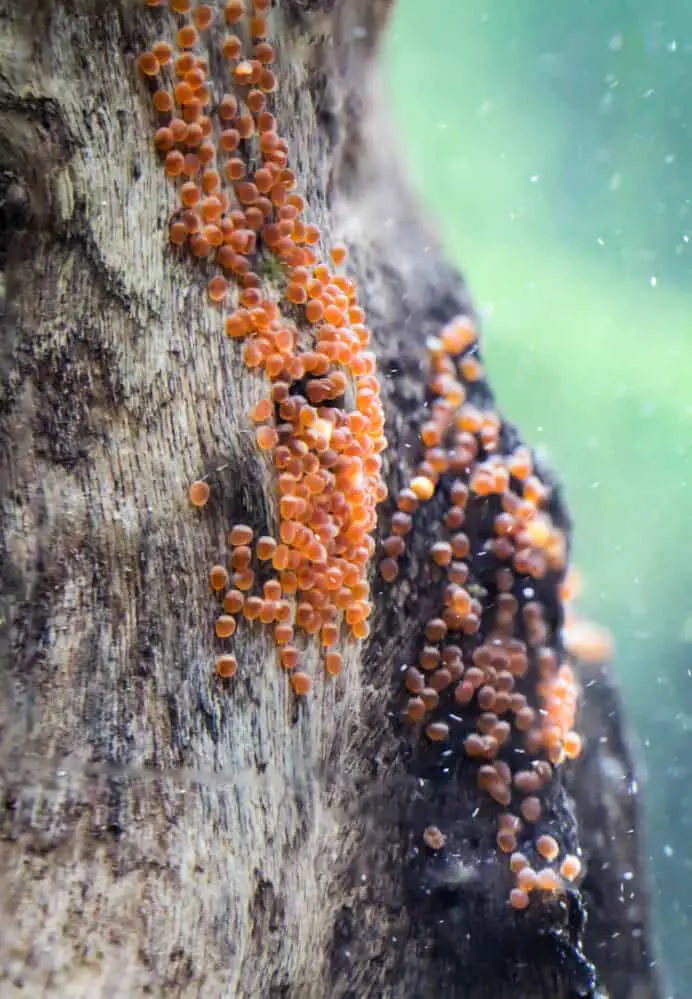
1. What Do Discus Eggs Look Like?
The newly laid eggs are typically clear and white. But as the eggs are fertilized, the color changes and becomes goldish or orangish.
However, those eggs that are unfertilized remain white with fungi.
2. How Long Do Discus Eggs Take To Hatch?
The spawning of discus fish is almost similar to the angelfish.
After around 60 hours (based on water temperature), the eggs tend to hatch. The parent discus fish, then places the young ones in a different place in the breeding medium until they can swim on their own.
3. How Many Eggs Do Discus Lay?
A female discus fish can lay up to 400 tiny eggs. Usually, larger females lay more eggs than the smaller ones.
Once the eggs are fastened to the surface, the male discus quickly comes from behind and fertilizes that batch of eggs.
4. Where Do Discus Fish Lay Eggs?
The spawning of discus fish typically happens on a vertical surface. However, in many cases, the pairs prefer laying their eggs on a broad leaf plant like an Amazon sword.
Although not necessary, if your tank doesn’t have decorations or plants to serve as the surface for egg laying, it’s good to have a breeding cone in the tank (available on Amazon).
#4. Convict Cichlid Eggs
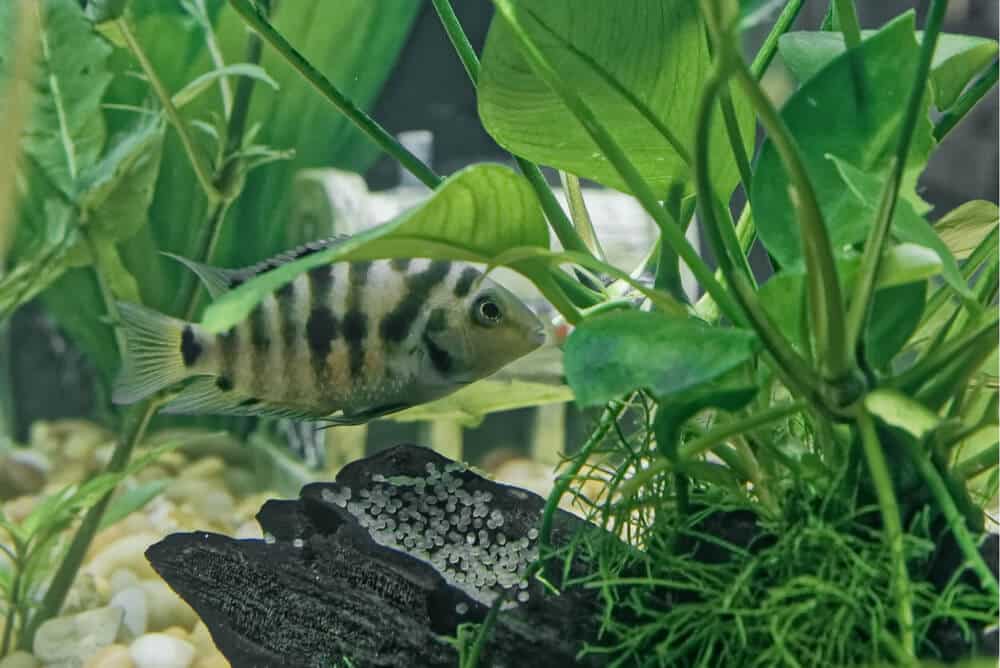
1. What Do Convict Cichlid Eggs Look Like?
Convict Cichlid eggs are about the size of small beads and are typically whitish-brown.
In general, if the eggs stay amber-colored, that indicates the eggs are fertile. However, if the eggs turn white are usually infertile.
2. How Long Do Convict Cichlid Eggs Take To Hatch?
The eggs of convict cichlids typically hatch after around 72 hours once fertilization is done.
3. How Many Eggs Do Convict Cichlid Lay?
The Female Convict cichlids lay around 200 eggs per clutch. These, then, hatch into wrigglers.
4. Where Do Convict Cichlid Lay Eggs?
Convict cichlids usually lay eggs on a structure in a fish tank.
The spawning of convict cichlids happens in small crevices or caves. The female convict cichlid is known to adhere the eggs to the walls of the cave.
#5. Clownfish Eggs:
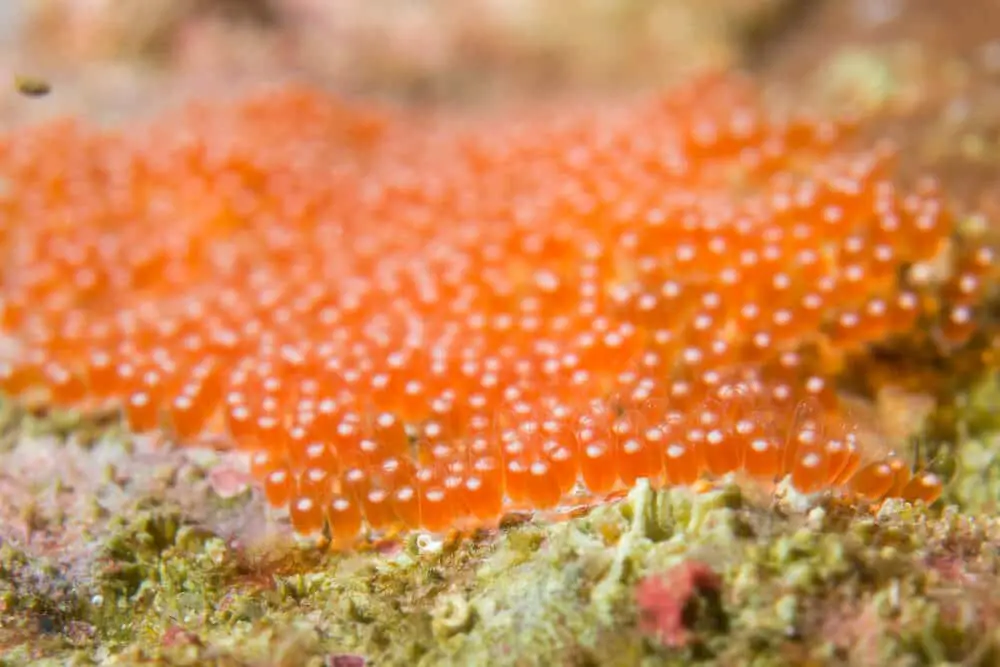
1. What Do Clownfish Eggs Look Like?
In the starting, the clownfish eggs look like small orange dots, and they are around 3-4 millimeters long.
2. How Long Do Clownfish Eggs Take To Hatch?
The clownfish eggs typically hatch in about 5-10 days. The male clownfish is the one doing most of the egg-sitting task.
He fans the egg and eats up any infertile or fungus-damaged eggs.
The clownfish larvae float away and spend about ten days adrift. In the beginning, they are mostly clear or transparent. However, as they mature, they start gaining the typical color of their species.
3. How Many Eggs Do Clownfish Lay?
The female clownfish can lay from 100-1000 eggs. After the female clownfish lays the eggs, the male passes over the nest and fertilizes the eggs.
4. Where Do Clownfish Lay Eggs?
Clownfish typically lay eggs on rocks or other hard surfaces. They choose a small patch of rock they have cleaned to lay the eggs.
List Of Aquarium Fish That Don’t Lay Eggs
- Guppies
- Swordtails
- Mollies
- Platy Fish
Typically, fish that belong to the livebearers group don’t lay eggs.
Guppies, Mollies, Swordtails, and Platies are all examples of live-bearing fish. The term livebearers refers to the fish that retain eggs inside their body and give birth to live, young ones.
What To Do When Fish Lays Eggs?
The fish in your tank laid eggs. What next? This is one of the most likely concerns when discovering a batch of eggs in your fish tank, especially for the first time. But don’t worry, it’s just a normal phenomenon of nature.
You deserve congrats because fish only tend to lay eggs when they feel happy and comfortable.
So once you decide to have the fish eggs hatched in your aquarium, it’s time to start thinking about protection.
The fish tank with other fish is not a very safe place for the newly laid eggs.
In many fish species, you have to separate the fertilized eggs and the fry from the adult fish. Because, at times, fish can eat their own eggs to make up for their own lack of energy and food.
So the question is how to protect the fish eggs? Let’s see!
How To Protect Fish Eggs In A Tank?
There are mainly two ways of protecting the fish eggs in a tank.
1. Moving the fish eggs gently and safely to a separate tank free from any other aquatic species.
Here’s a nice video demonstrating how to move fish eggs into another tank.
2. Keep the fish eggs in the same tank but with a separation like installing a tank divider or using the breeder box.

(You can click the above image to check the shown item on Amazon)
Final Thoughts
So now that you know what fish eggs look like, it’s time to take good care of them and enjoy having new members in your tank.
One thing to note is that the fish eggs can be prone to bacterial and fungal infection in the fish tank. So it is essential to ensure that the tank water is filtered and cleaned appropriately and there are no significant changes in the tank water parameters.
So that’s it! Please share this guide with others if you found any value. Thanks, and happy fishkeeping.
Recommended Further Reading: Do Mystery Snails Eat Fish Eggs?
Hi! I’m Praveen Ghoshal, the founder of eFishkeeping.com. Inspired by my Dad, I got interested in fishkeeping when I was a kid. Since then, I have been involved with this hobby. Currently, I have 3 fish tanks at our home, and I enjoy this hobby with my full family. Read more about me here.




